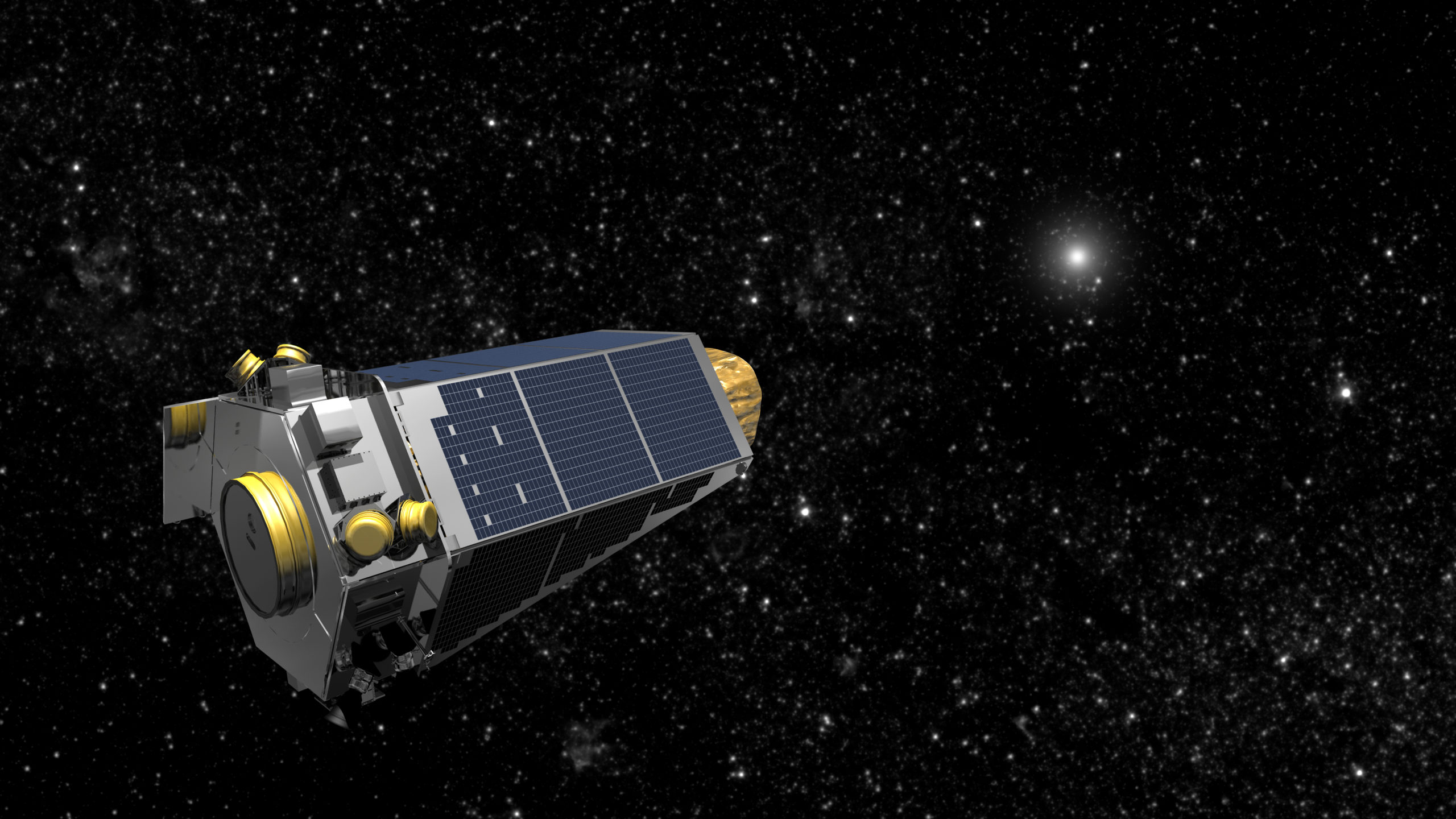Kepler is the gift that keeps on giving. After suffering a major malfunction five years ago, the rejiggered space-based telescope continues to churn away, scanning the heavens for signs of distant worlds. An international team of astronomers has now released the results of its latest survey, confirming the existence of nearly 100 new exoplanets.
Pretty space art. Image: ESA/Hubble/ESO/M. Kornmesser
Back in 2013, a mechanical failure placed the Kepler mission in jeopardy. Scientists managed to salvage the planet-hunting mission by periodically shifting its field of view. Specifically, Kepler’s thrusters are now fired about once every six hours, allowing the satellite to maintain its balance against incoming solar radiation. It isn’t a perfect solution, as it can only point its eye to a specific spot in space for roughly 83 days before it has to look away to prevent sunlight from interfering with its operations. But at least it works, and it’s still pulling in immensely valuable information. This rebooted phase of the mission is called K2.

Kepler performs its search for planets by sniffing for minute dips in a star’s brightness, which are suggestive of a planet orbiting in front of it. Astronomers have to validate these dips in luminosity to prove they’re actually caused by exoplanets, and not other sources such a nearby asteroid, interfering star systems, a distant cloud of gas and dust, or human-caused mechanical interference.
As a new study published today in the Astronomical Journal reports, the latest investigation of K2 data has yielded a batch of new exoplanets. An international team led by Andrew Mayo from the National Space Institute at the Technical University of Denmark took a closer look at 275 exoplanet candidates, validating 149 of them. Of these, 95 are planets completely new to science. Now, this doesn’t mean that all of the other exoplanets aren’t actually exoplanets – it just means more work is required to confirm them as such. This latest K2 data investigation is the culmination of four years of meticulous researching, requiring the additional help of astronomers from NASA, Caltech, UC Berkeley, the University of Copenhagen, and the University of Tokyo.

Conceptual image of Kepler. (Image: NASA)
Since the mid-1990s, astronomers have catalogued over 3600 confirmed exoplanets, and the two Kepler missions have found over 5100 unconfirmed exoplanet candidates. Not bad at all.
“The original Kepler mission was our first glimpse into the incredible abundance and diversity of exoplanets in the galaxy. It taught us volumes about the types of exoplanets and exoplanet systems that can exist in nature and gave us an idea of what the general exoplanet population looks,” Mayo told Gizmodo. “The follow up K2 mission, on the other hand, has provided us with a great deal of interesting individual planets and systems that we can now start to study in greater detail. So by increasing the number of planets discovered with K2 by almost 50 per cent, this work will help astronomers dive much deeper into analysing and learning about individual planets, particularly smaller exoplanets.”
Indeed, discoveries such as these are important because they help astronomers to better understand where our solar system fits into the larger context of things. As we’re learning, our immediate neighbourhood is a bit of an oddball. Most star systems involve blazingly hot and massive gas giants that sit uncomfortably close to their host stars, or binary star systems in which complex gravitational effects make it difficult for planets to form. And then there’s the overrepresentation of small red dwarfs and their tiny, rocky worlds. Life may exist in these systems, but the fact of the matter is that our particular stellar/planetary architecture is unique.

Artist’s impression of a distant red dwarf star system. (Image: NASA)
The newly discovered exoplanets include rocky, Earth-like worlds smaller than our own as well as planets the size of Jupiter and even larger.
“One of the planets – HD 212657 – orbits the brightest star known to host a planet ever found by either the Kepler or K2 missions,” Mayo told Gizmodo. “But beyond that, the most interesting thing about this new release of planets is that they orbit stars that are quite bright relative to the original Kepler mission, so many will be excellent targets for followup observations, such as mass measurements and atmospheric characterisation. In comparison, very few targets from the original Kepler mission were suitable for those types of analyses.”
No doubt, bright stars with planets around them are an added bonus, as astronomers can then perform more investigative work using both space-based and ground-based telescopes. And as great as Kepler is, the best is still yet to come in the form of the James Webb Space Telescope and the Transiting Exoplanetary Survey Satellite. The next generation of telescopes are sure to reveal even more worlds – perhaps some just like ours.
